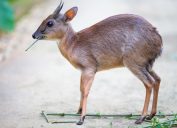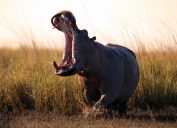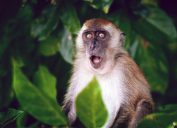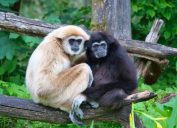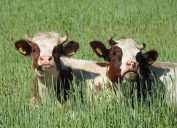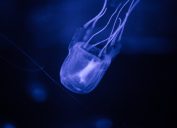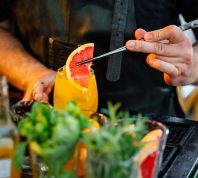37 Animal Oddities That Prove Mother Nature Is Crazy Weird
When it comes to natural selection, there are no rules.

Each year, researchers discover an abundance of new species. In fact, according to the International Institute for Species Exploration, the number hovers around 18,000 annually. But every once in a while, scientists come across a critter that forces us to ask the question: Does Mother Nature have any rules?
Whether it's a creature that resembles a mythical being, a wacky Dr. Moreau-esque multi-animal amalgamation, or just an especially fear-inducing freak of nature, some of the animals Mother Nature has produced make us think that, no, there absolutely are no rules.
1
Dementor Wasp
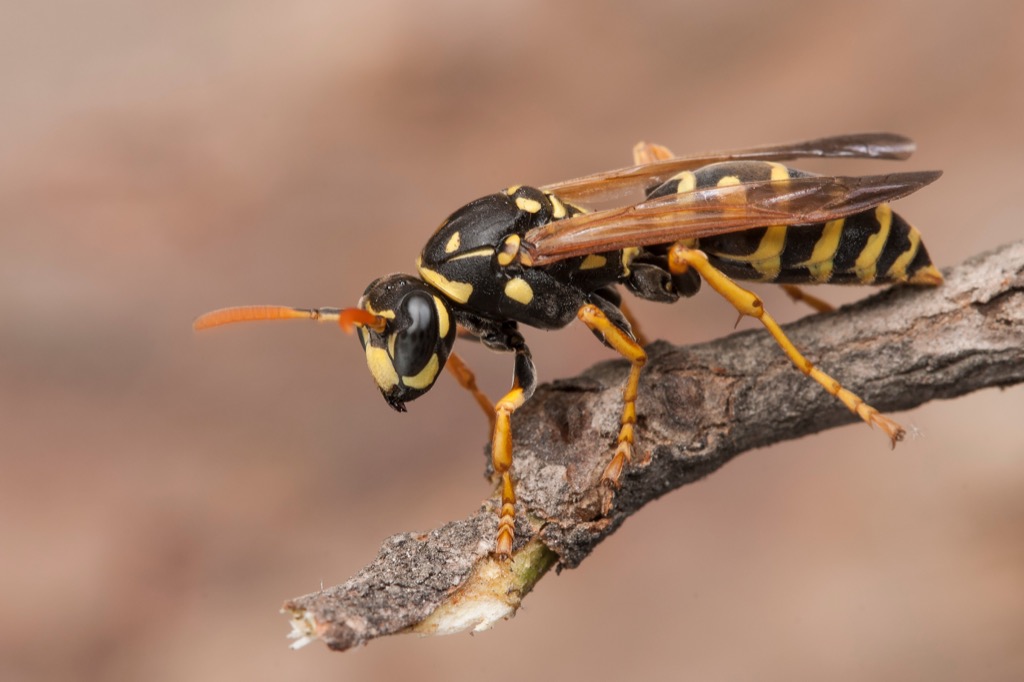
Well, this is one vicious creature. The dementor wasp injects venom into its victims—putting them into a zombie-like state—and then eats them alive. According to a CNN report, this species was named after the flying, soul-sucking dementor creatures from the Harry Potter series. Fitting.
2
Goblin Shark

And they said the creatures from horror movies stayed in horror movies. These pinkish sharks have long, protruding snouts and sharp teeth. But perhaps most amusing is the way they eat. According to Shark Sider, "Their mouth actually extends outward from their body and can move independently."
3
Yeti Crab
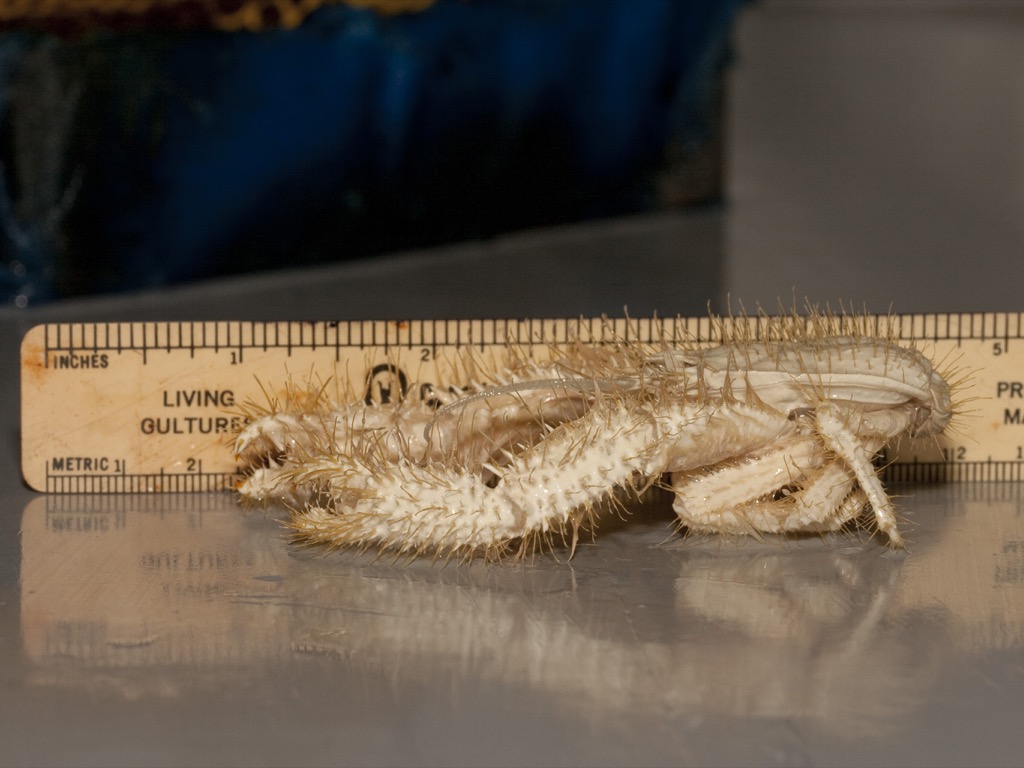
The yeti crab can be found in Antarctica, but loves warm water. They live at the darkest depths of the ocean floor where hot water gushes in through thermal vents. The crab is named for its all white, hairy body—which is (supposedly) just like that of a yeti.
4
Star-Nosed Mole
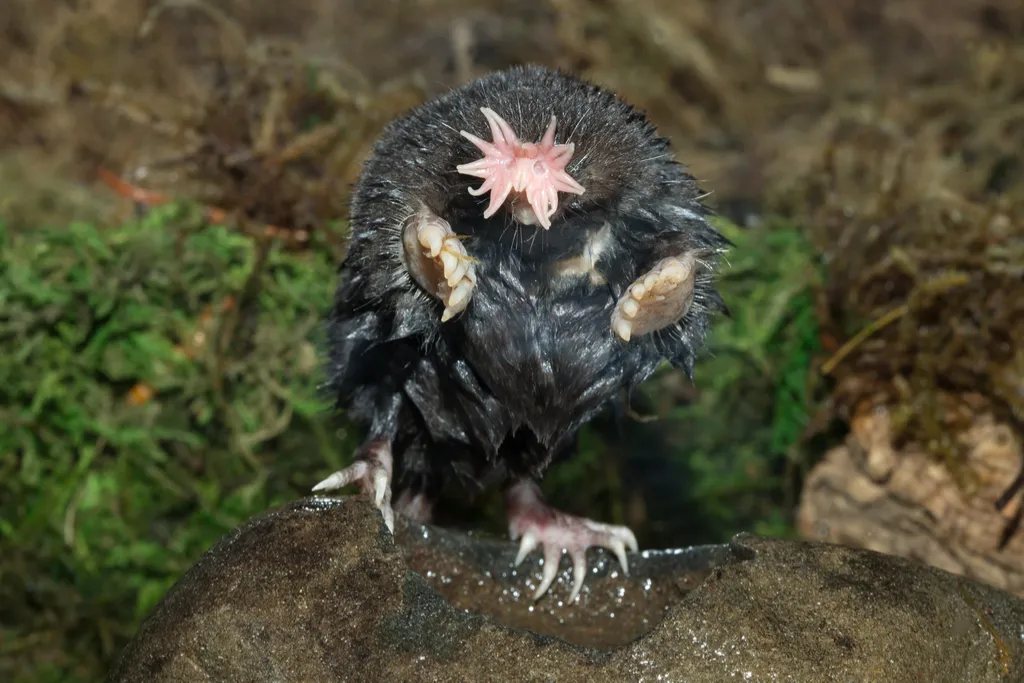
You definitely don't want to see one of these in your nightmares. The star-nosed mole looks like it has three sets of hands coming out of it—the middle one being where a nose typically is. This mole's star-shaped "nose" has six times the sensitivity of a human hand, giving it the ability to feel its way around in the dark tunnels moles live in.
5
Dumbo Octopus
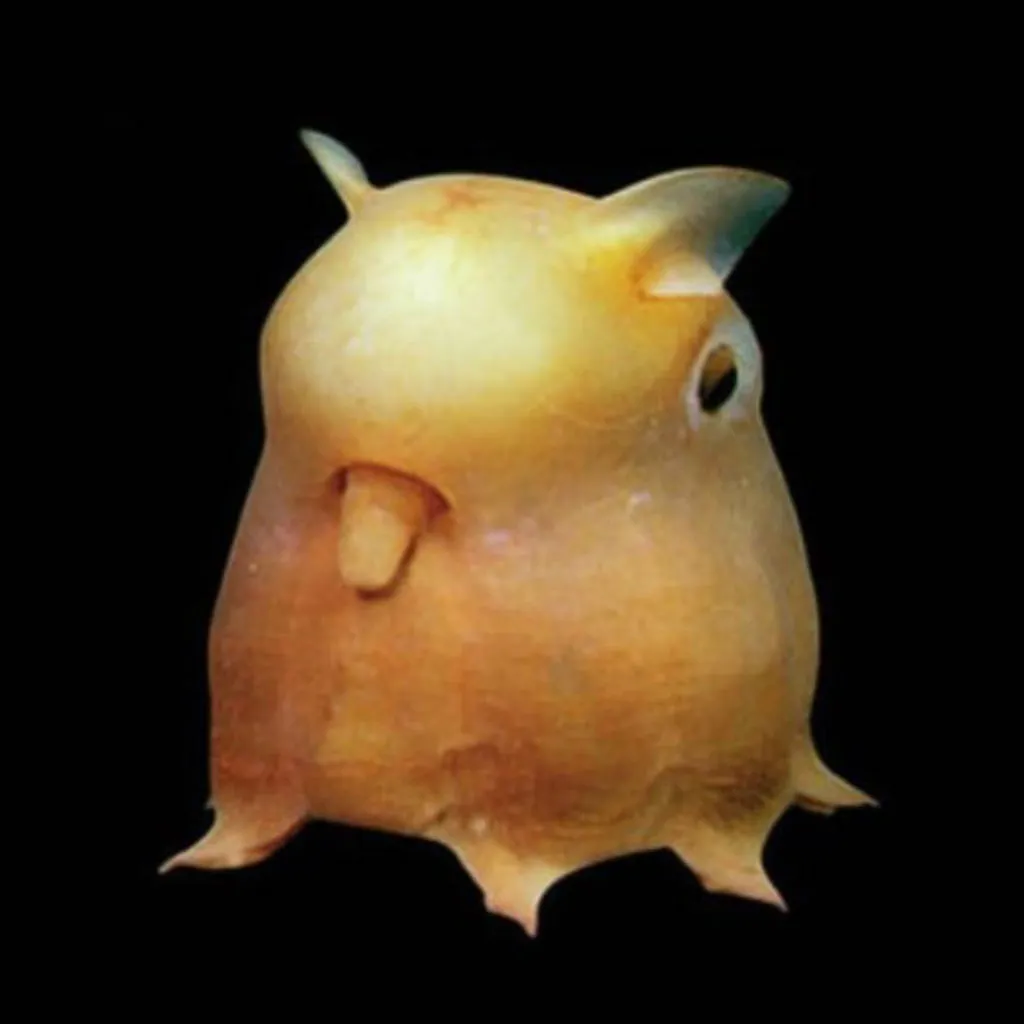
Dumbo octopuses are the deepest living group of octopuses, meaning that they live in extremely cold water with no access to sunlight. Their ear-like fins help them move through the depths, and distinguish them from other octopus species.
6
Pink Fairy Armadillo

Pink fairy armadillos are the smallest—and arguably the cutest—species of armadillo. But you might have trouble spotting them, seeing as they spend most of their time underground.
7
Thorny Dragon
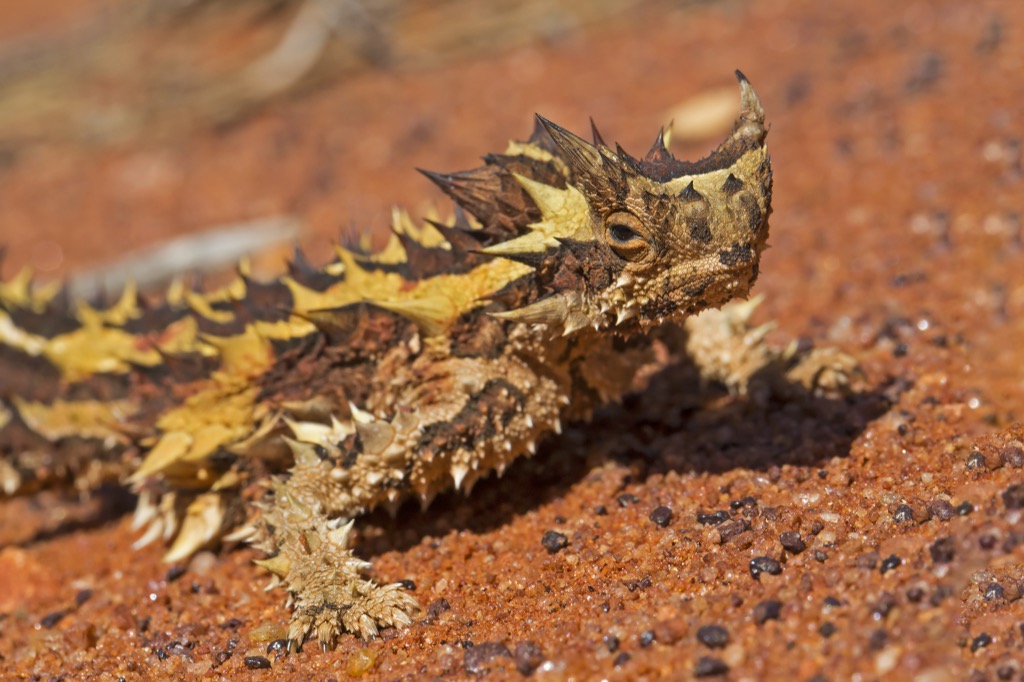
No, not all dragons are confined to legends and fantasy texts. For proof, meet the thorny dragon. These guys are covered in spines, and they consume water by sucking it up from the ground. But things gets even weirder—they have fake heads! According to Strange Animals, thorny dragons bury their real heads when they are threatened, deceiving their predators by showing only their fake, thorn-covered heads. (Don't worry: they don't breathe fire.)
8
Tufted Deer
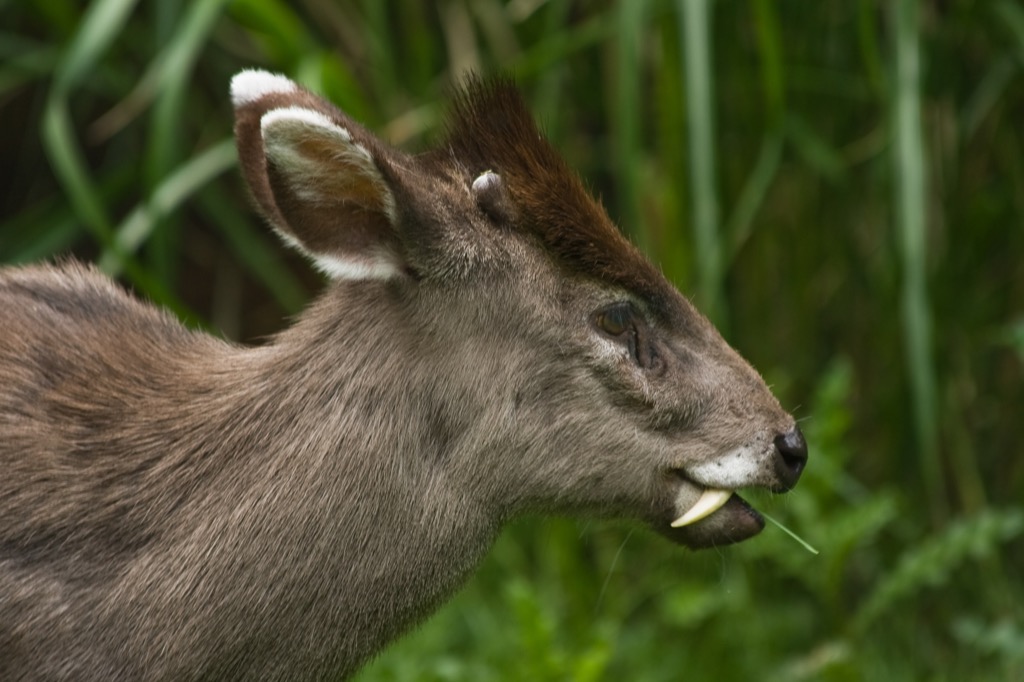
At first glance, the tufted deer might not look much different from other deer species, but once you notice their vampire-like fangs and tufts of black hair, you'll realize how strange they really are. According to World Atlas, tufted deer have yet to be extensively studied because they live at such high altitudes: exclusively up to 4,500 meters above seal level.
9
Sun Bear

Sun bears (the world's smallest bear species) are found in the tropical forests of south-east Asia. You can identify them by the orange mark on the chests—and, if you're lucky enough to get a glimpse, their insanely long tongues. Due to short, stocky bodies, small ears, and short muzzles, sun bears have rightly earned the nickname "dog bear." In fact, it took one man in China two years to realize that two of his pet dogs were indeed sun bears.
10
Panda Ant

No, this isn't an actual combination of panda and ant. For one thing, the two simply can't breed. And for another, pandas are docile; these buggers (which are actually wingless wasps) are not. There's a reason they're also referred to as "cow killers." Their excruciating sting is painful enough to subdue a large cow.
11
Hummingbird Hawk-Moth

Three animals in one! These moths have many of the characteristics found in hummingbirds, and are covered in gray hair that gives the appearance of hawk feathers. The hummingbird hawk-moth's creepiest attribute is definitely its eyes. According to Safer Brand, "It will appear as though it's watching you no matter where you stand relative to the moth's position. This is due to an optical illusion created by its massive, compound eyes."
12
Okapi

Yet another animal seemingly weird enough to leave you in disbelief is the okapi—also known as the forest giraffe. The okapi has the long tongue of a giraffe, the body of a horse, and striped legs like a zebra. They are found in the African rainforest, and they have scent glands on their feet that spread tar-like markings to claim their territory.
13
Lowland Streaked Tenrec
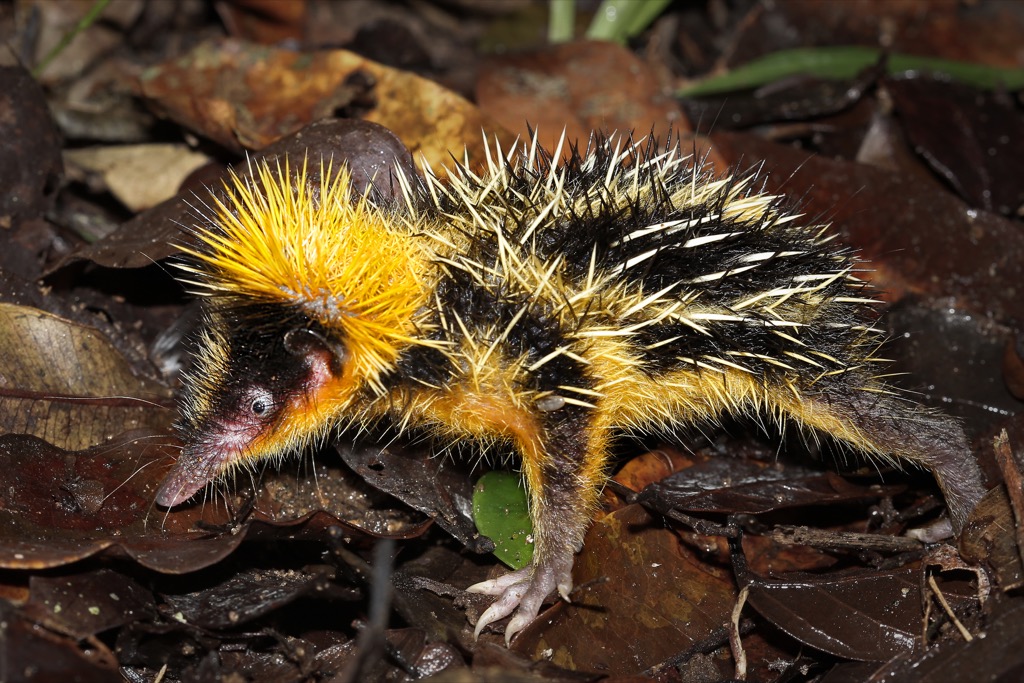
Recognizable by their bright yellow stripes and porcupine-like quills, lowland streaked tenrecs are impressive animals. When threatened, they aim their detachable spikes towards predators in order to protect themselves—like a hedgehog or porcupine, only with far sharper spikes.
14
Glass Frog

Glass frogs are incredible creatures due to their transparent underbellies, which leave their whole organ system visible. They have green backs, and blend in well with leaves.
15
Irrawaddy Dolphin

These cartoon looking animals are known for their cute, lovable faces. They have bulging foreheads and short beaks, which creates the illusion of a smile. Sadly, these beautiful creatures are getting closer and closer to extinction due to bycatch and habitat loss.
16
Lilac-Breasted Roller

Most famous for being the national bird of Kenya, the lilac-breasted roller is a beautiful creature. As you probably guessed, the bird has light purple feathers on its chest. The rest of its body is covered in beautiful orange, white, and green shades.
17
Blue Glaucus
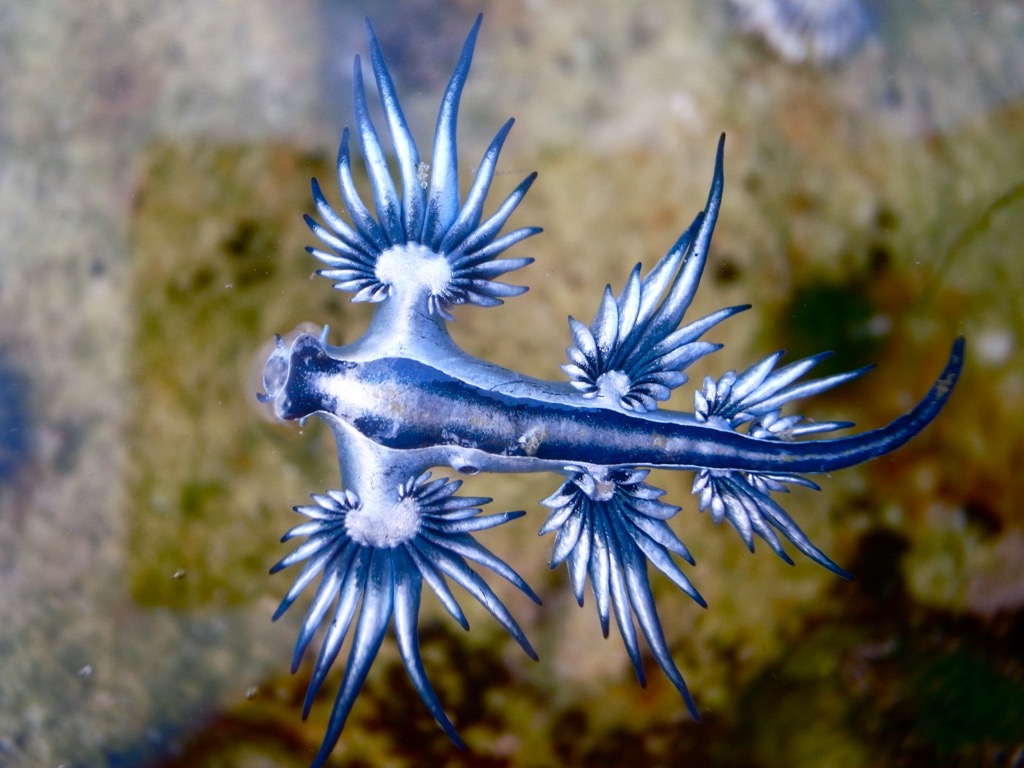
The blue glaucus is a sea slug with an interesting defense mechanism. According to Oceana, a sea conservation nonprofit, they are able to take toxic chemicals from their prey and incorporate them into their own skin to use against predators.
18
Aye-Aye
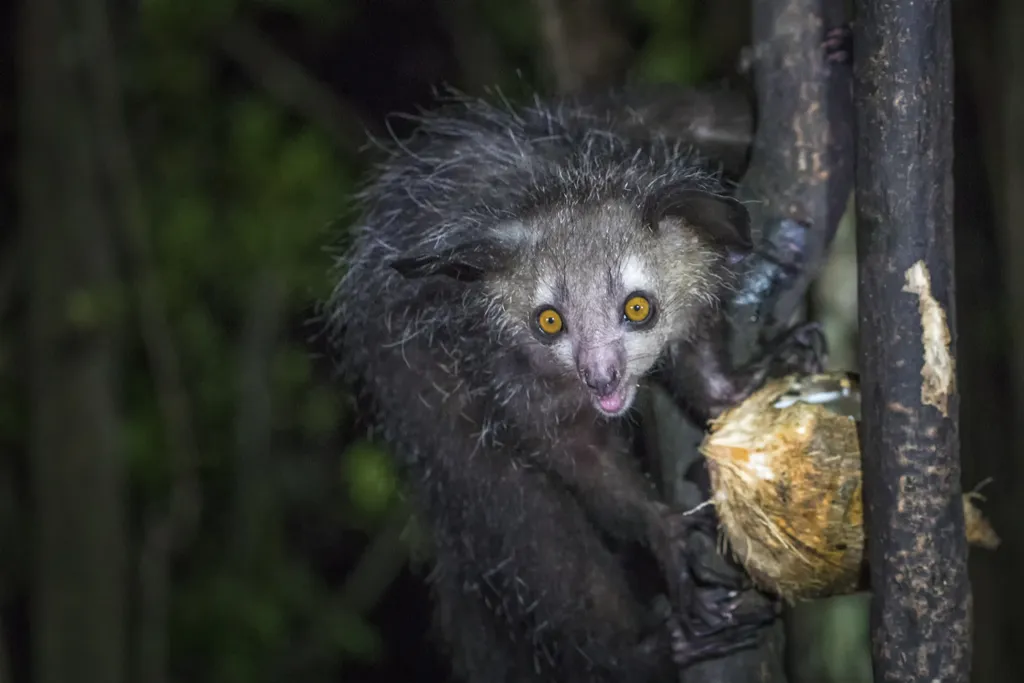
Perhaps the scariest looking animal you'll ever see, the aye-aye is classified as a lemur. They are found in Madagascar, and have piercing green eyes, long claws, and large ears.
19
Japanese Spider Crab

If you have a fear of spiders, this fella is probably your worst nightmare. Japanese spider crabs weigh up to 40 pounds, and their legs grow to be around 13 feet long. They crawl along the ocean floor, and eat just about anything they can find.
20
Long-Wattled Umbrellabird
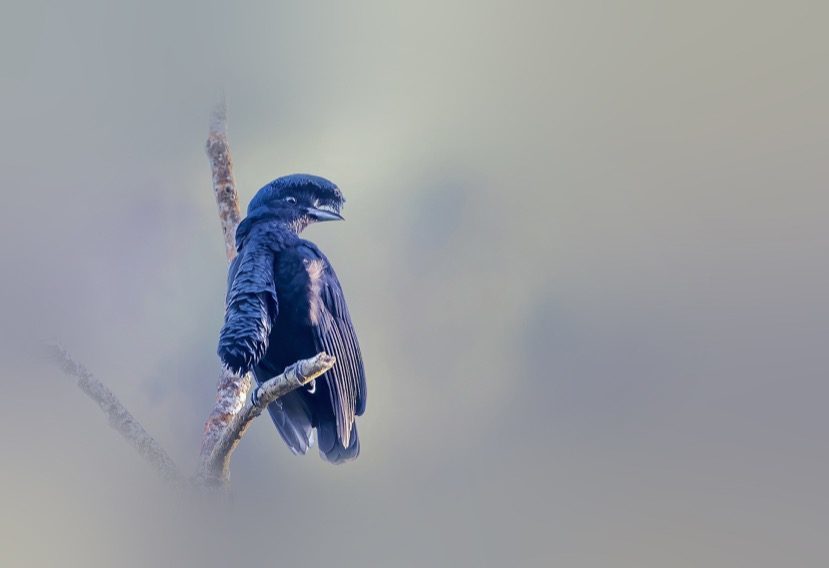
Well, these birds are just plain weird looking, like they're a living, breathing Poe poem. You can spot one by looking for the crest on top of its head, which resembles an umbrella, and by its long wattle. Long-wattled umbrellabirds are able to control the length of their wattles, and they always shorten them when flying.
21
Mata Mata Turtle

The mata mata turtle can easily camouflage into the leafy shallow streams they like to inhabit. Between their leaf-shaped heads, and flat shells, these creatures don't even look real.
Pig-Nosed Rat
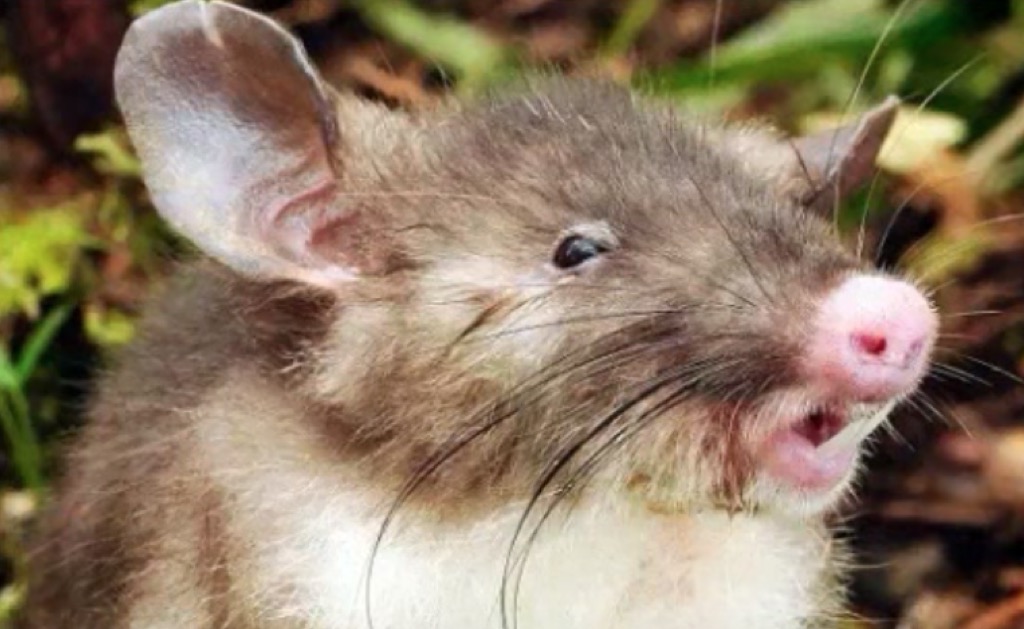
As reported by Live Science, when researchers in Indonesia captured two of these creatures back in 2013, they knew immediately that this was a new species. The rodent stands out among all others because of its unique snout, large fangs, and even larger ears.
23
Honduran White Bat
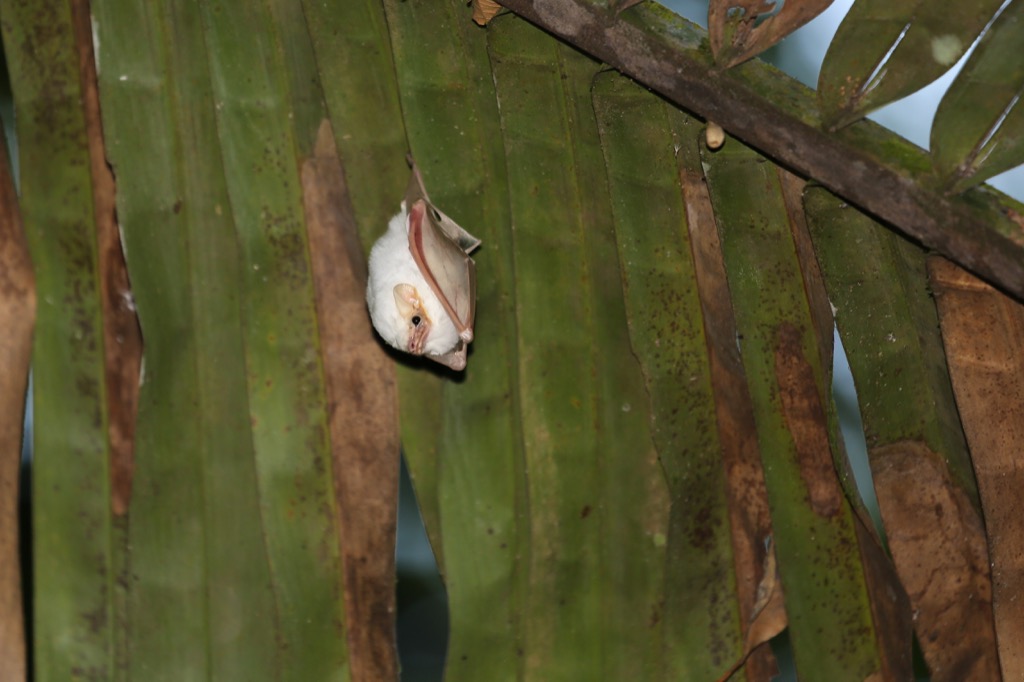
Characterized by its white fur and yellow leaf-shaped nose and ears, this species differs from other bats because they are neither dark in color, nor do they live in caves. But they are fluffy and, truth be told, kind of cute!
24
Purple Frog
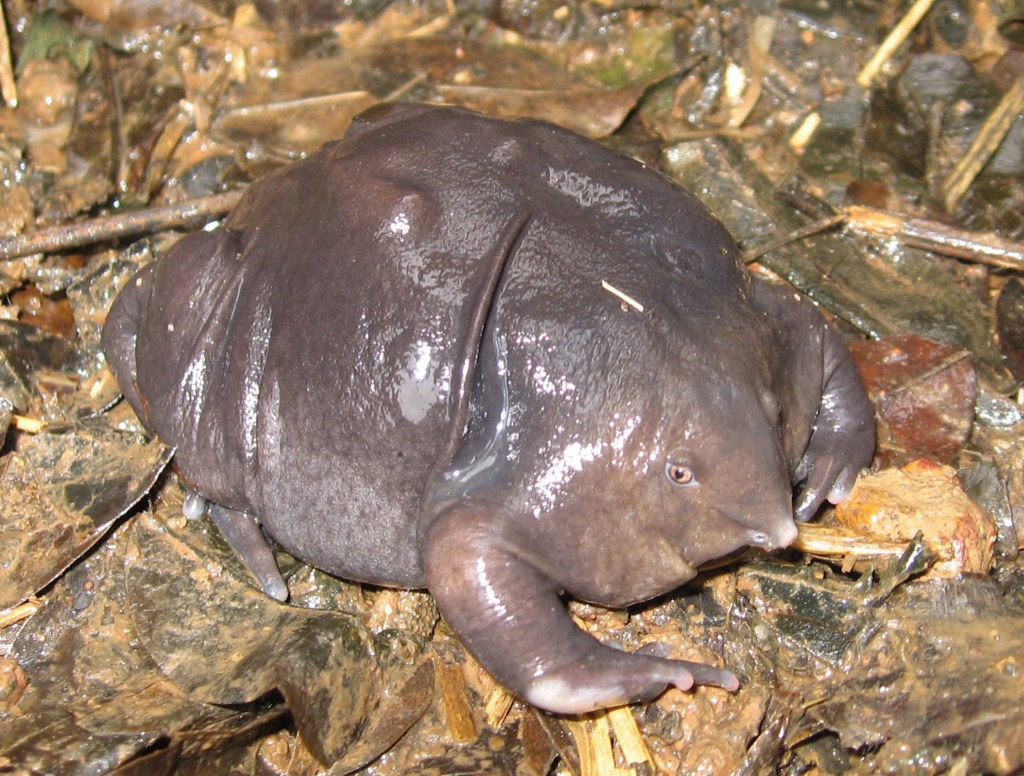
According to Zoological Society of London, purple frogs—whose round bodies resemble a sentient blob of slime—are only seen above ground a few days a year. They only leave the underground to breed.
25
Gharial
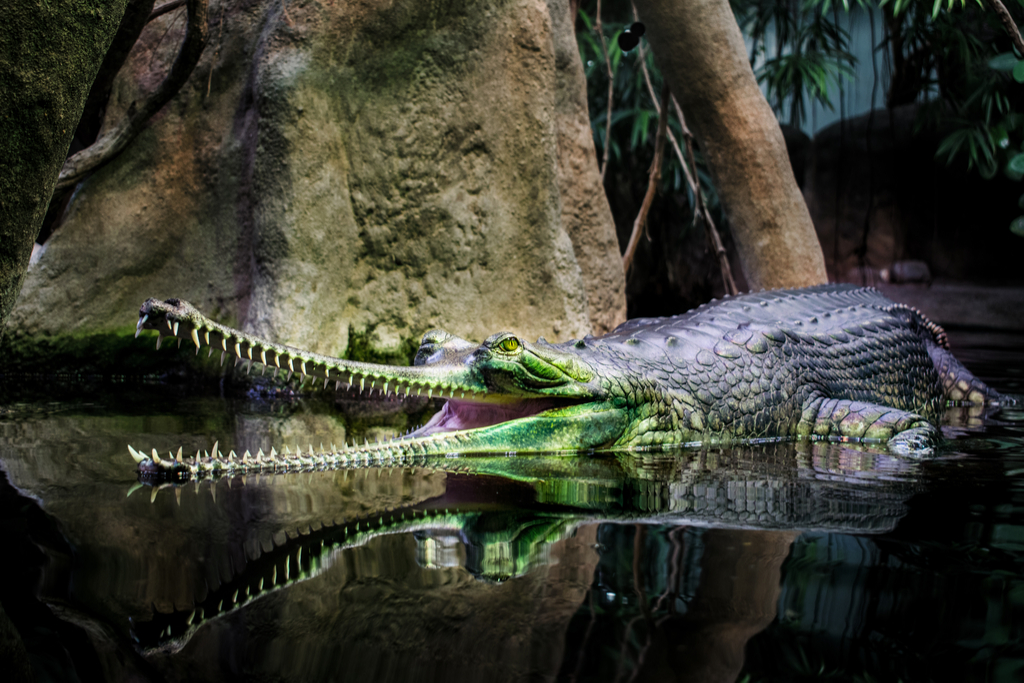
Gharials are crocodiles known for their long and skinny snouts with a large growth on the end of them. They are able to move quicker on land than other crocodile species, and have existed for more than 200 million years.
26
Sea Pig
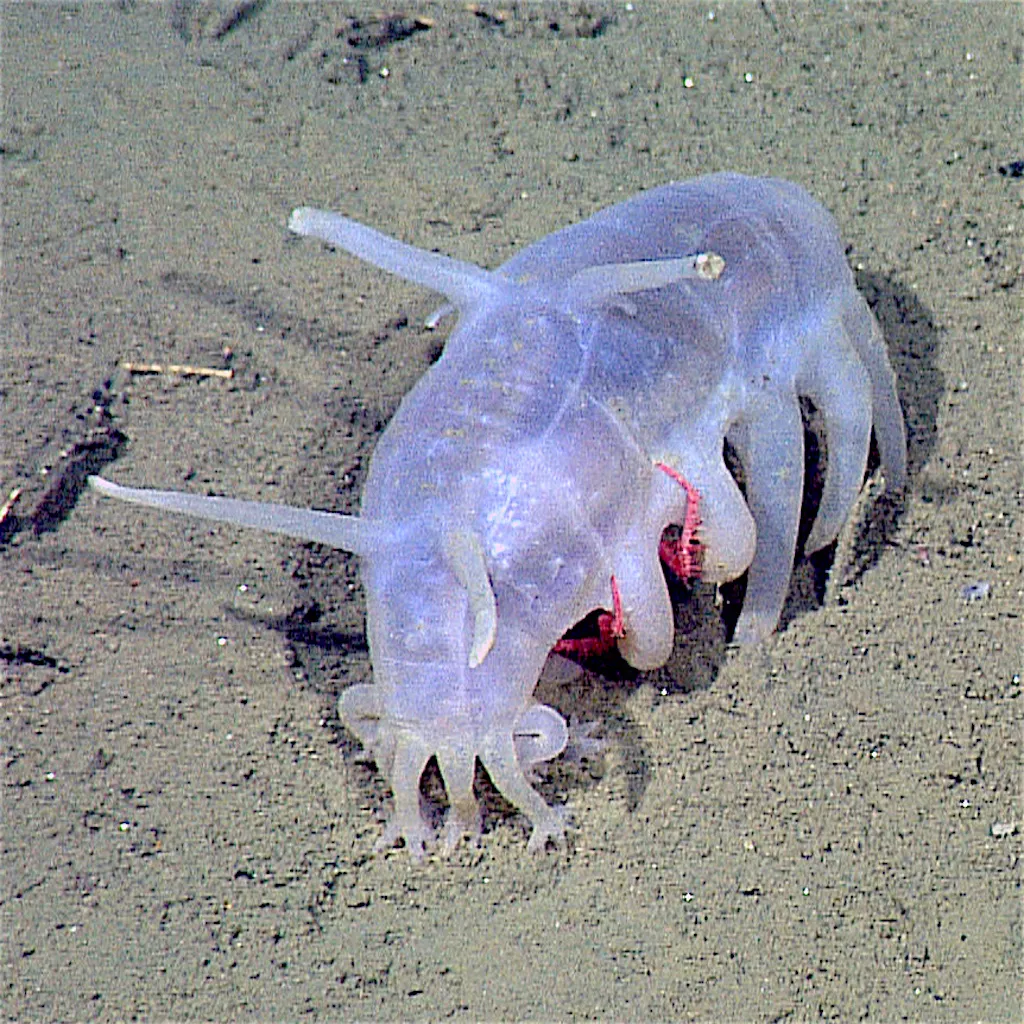
Sea pigs are another animal you will likely never see, despite them accounting for 95 percent of the total weight of animals on the deep-sea floor. But if you do find one, it will be small enough to fit in the palm of your hand.
27
Angora Rabbit

Angora rabbits are commonly kept as pets, but their fluffy wool coats set them apart from all other rabbits. It's like one big (living) fur ball!
28
Venezuelan Poodle Moth
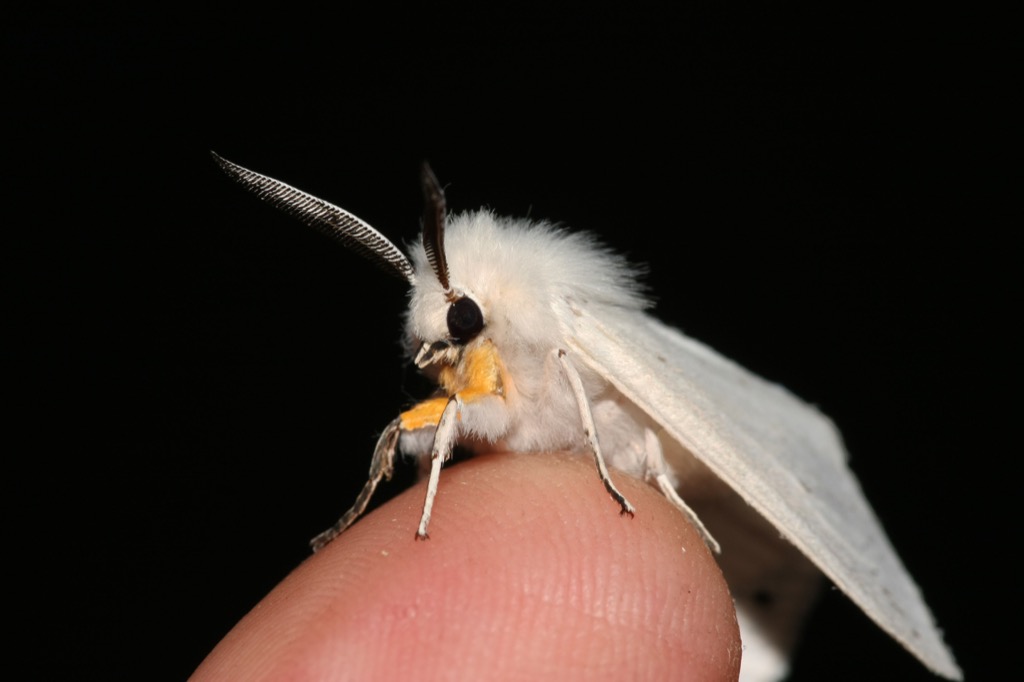
Almost mistakable for a stuffed animal or toy, the Venezuelan poodle moth is in fact real. It has a white furry body and black bulging eyes.
29
Red-Lipped Batfish

The mouth that it's named after makes this fish easy to spot. Despite living at the bottom of the ocean, this sea creature is actually a bad swimmer. Red-lipped batfish use their pectoral fins to walk along the ocean floor.
30
Saiga Antelope
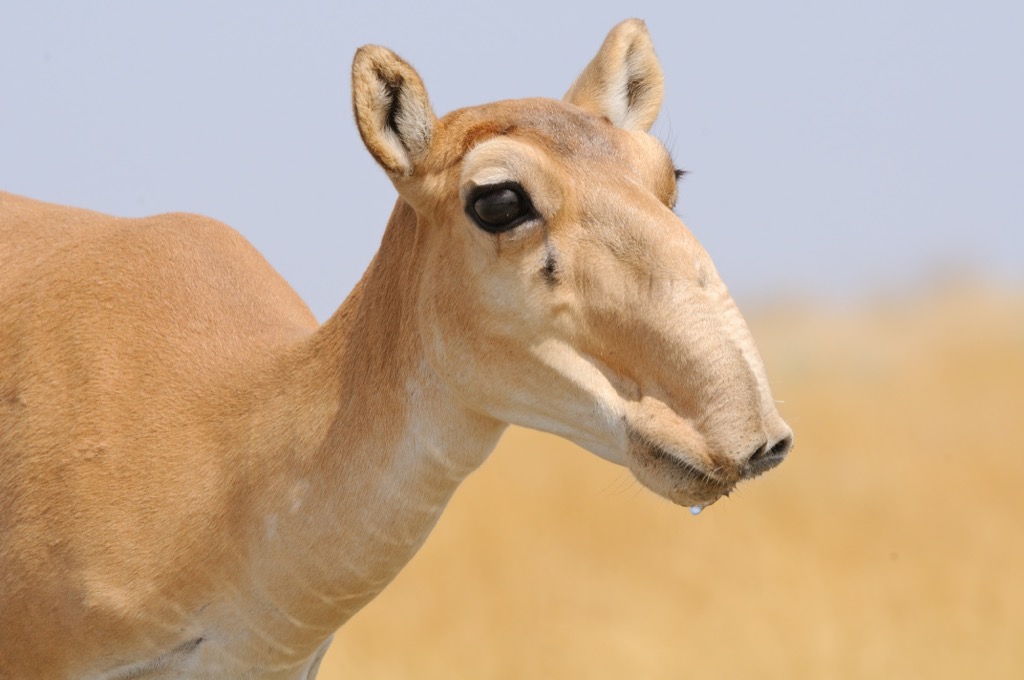
This species, known for its large nose, is critically endangered due to disease and hunting.
31
Jerboa

Jerboas are hard to miss because of their long hind legs. They use their tails to help them balance, and resemble wind-up toys when they hop around.
32
Superb Bird-of-Paradise

There are many more male superb birds-of-paradise than females, making for remarkable courtship efforts. The males both dance and screech in order to get attention from the females.
33
Satanic Leaf-Tailed Gecko

Another animal that doesn't even look real, this gecko's flat tail allows it to camouflage easily with leaves, which is perfect because they spend most of their time in trees. In order to avoid detection even further, satanic leaf-tailed geckos can flatten their bodies to reduce the appearance of a shadow.
34
Markhor
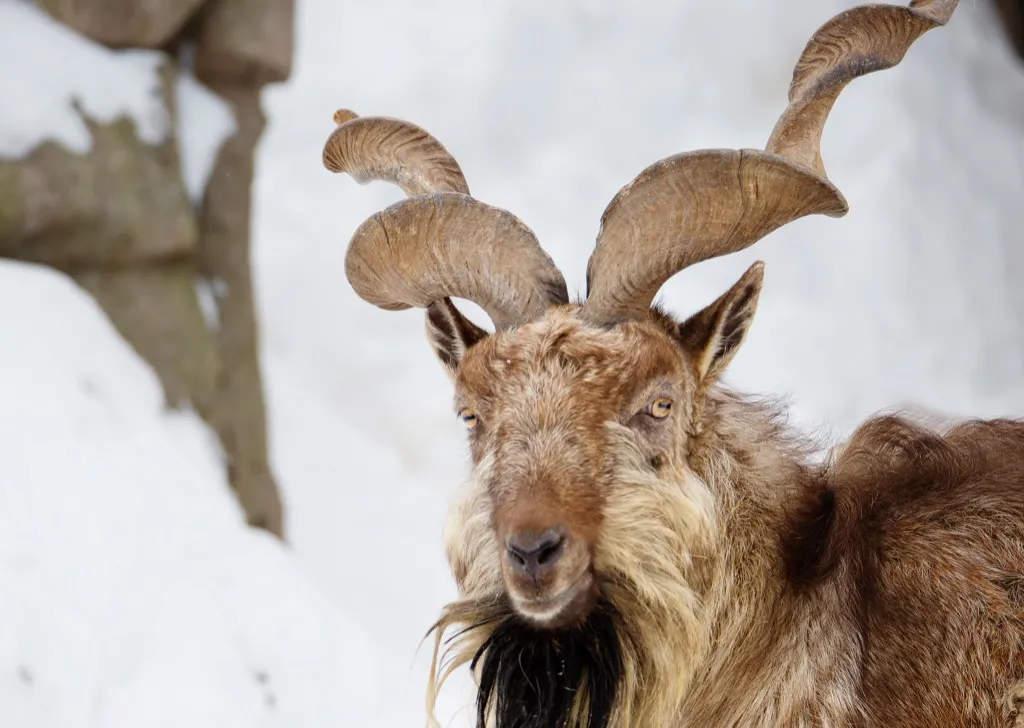
The Markhor is a type of wild goat, notorious for their large coiled horns and affinity for wintry climates.
35
Komondor

Similar to a mop, Komondors have long, white, corded coats. So, if you're looking for a pet that's sure to turn heads, consider getting a Komondor. Bonus: they don't shed!
36
Hispaniolan Solenodon
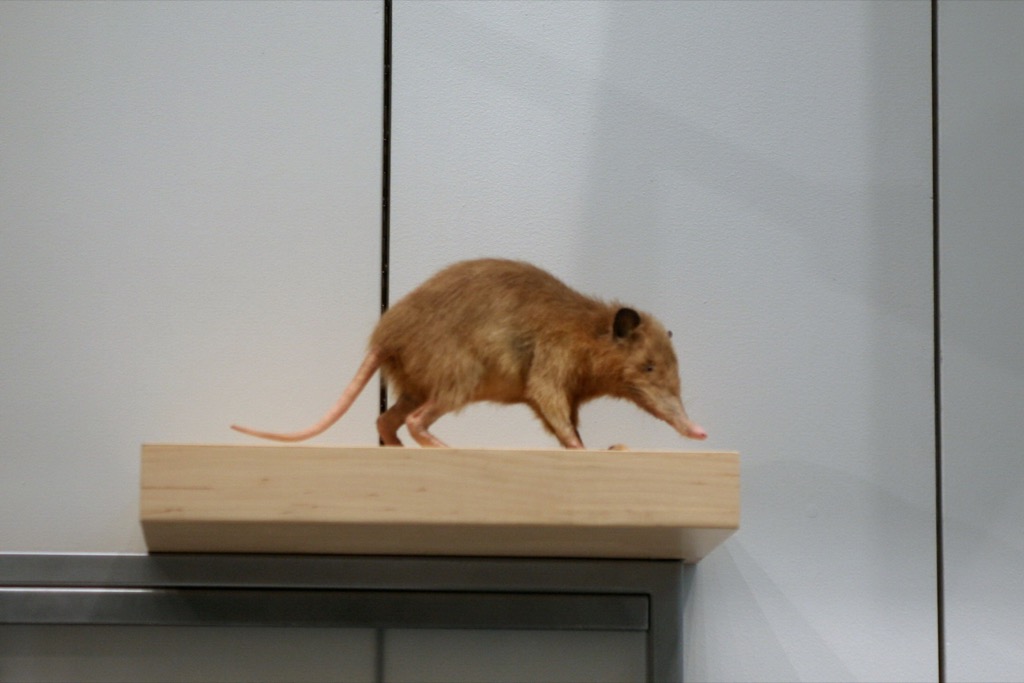
Stay away from these rodents because they're one of only a few venomous mammals. It shouldn't be hard to spot them because of their long upturned snouts.
37
Long-Horned Orb Weaver Spider

As the name implies, these insects are equipped with disproportionately long, imposing horns. If you don't have arachnophobia now, seeing one of these in real life is sure to give you a case. Regardless, it would be a misguided fear: despite appearances, their bites aren't poisonous to humans.
